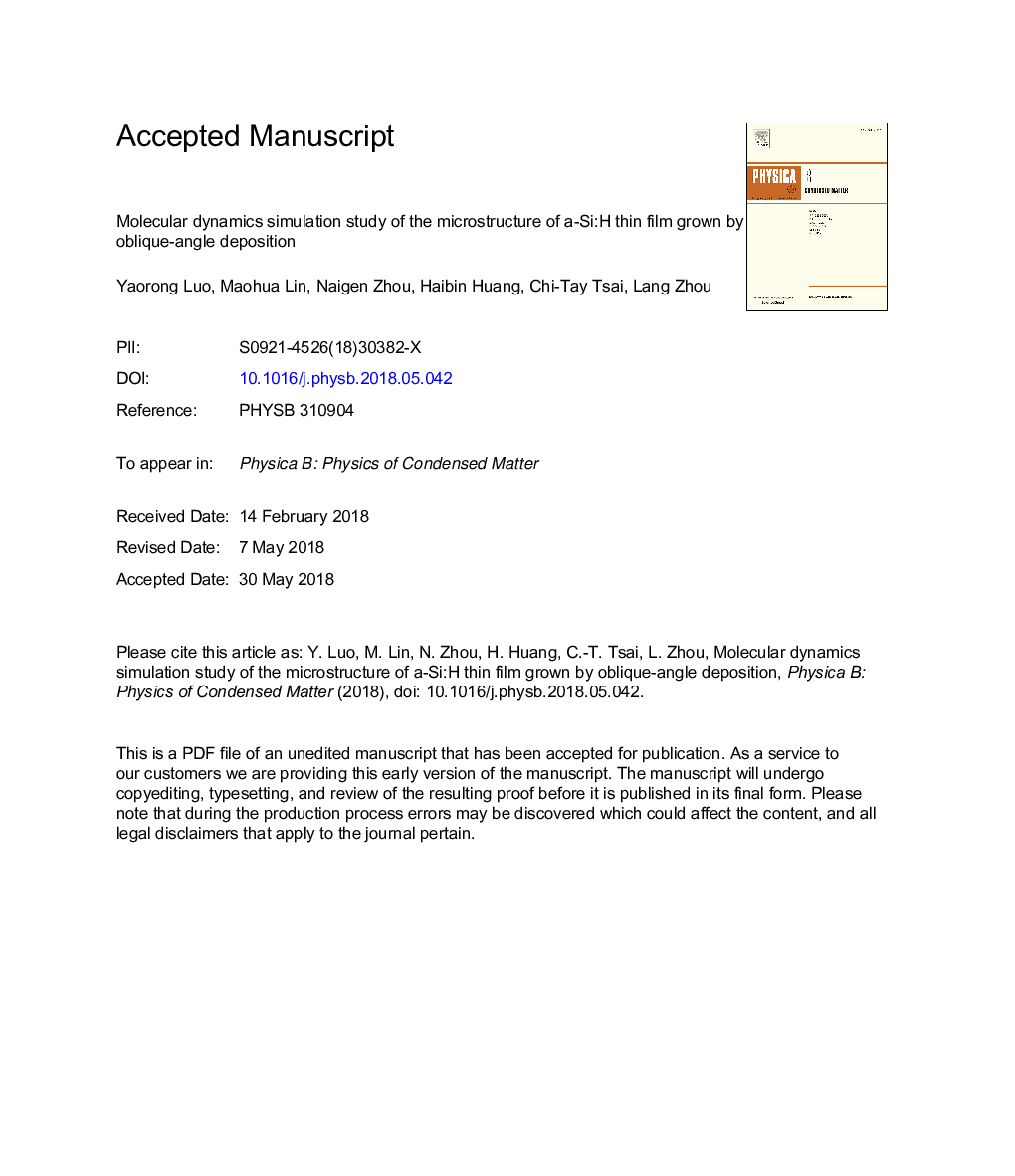| Article ID | Journal | Published Year | Pages | File Type |
|---|---|---|---|---|
| 8160185 | Physica B: Condensed Matter | 2018 | 27 Pages |
Abstract
A molecular dynamics simulation has been carried out to investigate the effect of the incident angle in the oblique-angle deposition method on the atomic structure of the resulted hydrogenated amorphous silicon (a-Si:H) thin film. The atomic interaction in SiH system was calculated by Murty-Tersoff potential. The simulation results show that the a-Si:H thin film grew in a two-dimension mode at low or normal incidence (0°, 15° and 30°), however, it changed to follow a columnar or island-like mode at high incidence. As incident angles increased from 0° to 75°, the surface roughness increased, the adsorption rate decreased, and the a-Si:H thin film had more porous, lower density and higher content of the dangling bond. The analysis of atomic diffusion indicated that the incident angle played a crucial role in affecting the diffusion of atoms: the diffusion ability of high incidence was greater than that of low incidence. The growth mode, microstructure of a-Si:H thin film, and atomic diffusion ability were mainly influenced by shadowing effect.
Related Topics
Physical Sciences and Engineering
Physics and Astronomy
Condensed Matter Physics
Authors
Yaorong Luo, Maohua Lin, Naigen Zhou, Haibin Huang, Chi-Tay Tsai, Lang Zhou,
